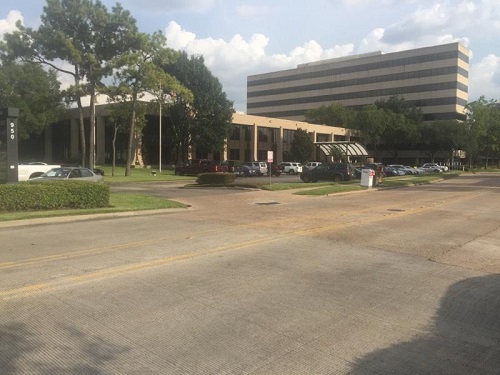The most frequent injury that follows blunt trauma to the chest is the rib fracture and it accounts for fifty percent of non-penetrating damages. Of all the patients admitted to a hospital after getting a blunt trauma to the chest, ten percent of them have one or more ribs fractured (1). Chronic pain along with increased mortality and morbidity is linked with rib fractures (2). Rib plating or surgical stabilization and rib fixation (SSRF) is increasingly used for managing the displaced fractures of the ribs. An external plate construct is performed commonly with SSRF which often needs mobilization of soft tissue and extensive dissection (3).
Patients having an injury pattern of flail chest can take advantage of rib fixation with pneumonia, intensive care unit duration of stay, reduced mortality, and a necessity of tracheostomy (1,4). However, most of the patients suffering from rib fractures do not present with a flail chest. The use of SSRF has increased for rib fractures without flail chest due to complications linked with rib fractures and the outcome has been a reduced rate of death and comorbid conditions (5,6).
INDICATIONS
Rib and external plating is indicated in those individuals having 5 ribs or more fractured with a flail, especially in those individuals that need non-invasive or invasive ventilation at positive pressure (7). It is also indicated in individuals who present with the visible paradoxical movement of the chest wall. Other indications include fractures of multiple ribs that are displaced bicortical, fractured ribs behaving as piercing objects, the combination of displaced and fractured ribs with sternal fractures or/and fractures or fractures of midshaft clavicle displaced ipsilateral. Moreover, rib and external plating can be used in case of uncontrolled pain associated with failure of non-invasive treatment, deformity of chest especially with decreased thoracic volume, the patient having acute respiratory distress syndrome with the instability of thoracic-cage, displacement of fractured ribs identified during thoracotomy procedure due to any other reason and chronic pain in the event of symptomatic rib nonunion (8).
PROCEDURE STEPS
Rib fixation is carried out usually under general anesthesia. The surgeon makes the skin incision, lifts the subcutaneous flaps, and uncovers the underlying muscles. The chest wall whenever possible is split in line with the fibers. The patient is made to lie down in a supine position to access fracture present anteriorly, in a lateral decubitus position to access fracture present posteriorly, or in a prone position to access paravertebral, posterior fractured rib. Once the surgeon reduces the fracture and restores the rib contour, he takes the precise measurement of the thickness of the rib with the help of a caliper. The surgeon makes 3 holes for screws on either edge of the fracture that will be packed with bicortical screws as per the common principle of fixing fractures.
The surgeon chooses plate length according to the fracture type, and contours it according to the rib’s share either manually or by using an instrument dedicated to bending of plate. Once the desired shape of the plate is achieved, the surgeon can grasp it with the help of a forceps over the rib and first it with the first screw or use an instrument for plate holding to set the plate over the rib. He then put the rest of the screws in one place of the fracture. Before placing screws on the second side, the surgeon makes sure that the anatomical position of repositioned fractured is preserved still. Surgeons secure the hemostasis before closing. A chest tube is placed in the thoracic cavity if the surgeon has opened the pleural cavity. This is done to drain air or any retained fluid. Muscle layers are closed with running sutures going through subcutaneous tissues. In the end, intradermal or interrupted absorbable running sutures are used to close the skin (9).
COMPLICATIONS
Relatively, there are fewer incidences of implant and surgery-related complications due to rib fixation. Complications usually include nonunion, bleeding, infection, and complication related specifically to the implant such as implant failure and irritation. However, infection related to fracture is quite uncommon after fixation of a fractured rib. Wound infection is also reported as a complication. Infections may occur in chronic osteomyelitis, compromised healing of the fracture, prolonged therapy with antibiotics, or reduced functionality. This often raises the requirement of broad radical debridement with the removal of the implant (10).
References
- Kasotakis G, Hasenboehler EA, Streib EW, Patel N, Patel MB, Alarcon L, et al. Operative fixation of rib fractures after blunt trauma: A practice management guideline from the Eastern Association for the Surgery of Trauma. J Trauma Acute Care Surg. 2017 Mar;82(3):618–26.
- Witt C, Bulger E. Comprehensive approach to the management of the patient with multiple rib fractures: A review and introduction of a bundled rib fracture management protocol. Trauma Surg Acute Care Open. 2017 Jan 5;2:e000064.
- Anderson D, Goldman D, Moritz T, Korzhuk A. Internal thoracic rib plating: A minimally invasive system for the management of displaced rib fractures. J Cardiothorac Trauma. 2019;
- Slobogean GP, MacPherson CA, Sun T, Pelletier ME, Hameed SM. Surgical fixation vs nonoperative management of flail chest: a meta-analysis. J Am Coll Surg. 2013 Feb;216(2):302-311.e1.
- Pieracci FM, Agarwal S, Doben A, Shiroff A, Lottenberg L, Whitbeck SA, et al. Indications for surgical stabilization of rib fractures in patients without flail chest: surveyed opinions of members of the Chest Wall Injury Society. Int Orthop. 2018 Feb;42(2):401–8.
- Fitzgerald MT, Ashley DW, Abukhdeir H, Christie DB. Chest Wall Stabilization Leads to Shortened Chest Tube Stay Time in Rib Fracture Patients after Traumatic Chest Wall Injury. Am Surg. 2018 May 1;84(5):680–3.
- de Moya M, Nirula R, Biffl W. Rib fixation: Who, What, When? Trauma Surg Acute Care Open. 2017 Apr 27;2(1):e000059.
- Fokin AA, Hus N, Wycech J, Rodriguez E, Puente I. Surgical Stabilization of Rib Fractures: Indications, Techniques, and Pitfalls. JBJS Essent Surg Tech. 2020 Jun;10(2):e0032.
- Kocher GJ, Al-Hurani M, Minervini F. Surgical fixation of rib fractures: how I do it. J Vis Surg [Internet]. 2020 Apr 5 [cited 2022 Aug 9];6(0). Available from: https://jovs.amegroups.com/article/view/32600
- Peek J, Beks RB, Hietbrink F, Heng M, De Jong MB, Beeres FJP, et al. Complications and outcome after rib fracture fixation: A systematic review. J Trauma Acute Care Surg. 2020 Aug;89(2):411–8.


